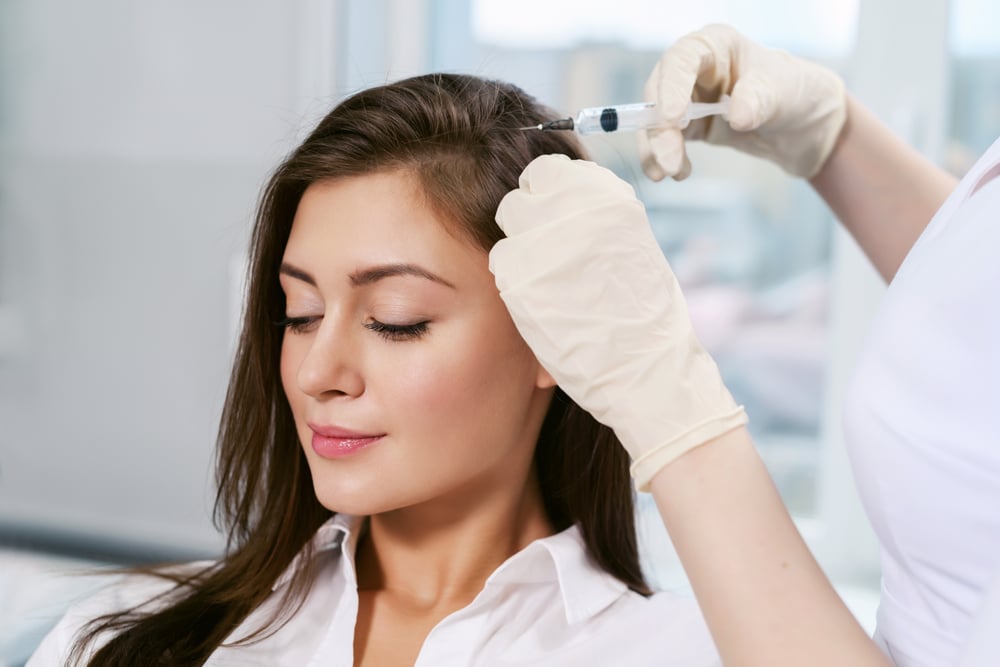Hair loss and thinning hair can affect self-esteem and overall confidence for both men and women. Among the many treatments available, PRP (Platelet-Rich Plasma) hair therapy has emerged as a natural and effective solution for stimulating hair growth and improving hair density. By using the body’s own regenerative properties, PRP offers a minimally invasive approach to hair restoration. This guide explores the benefits, risks, and expected results of PRP hair therapy.

What Is PRP Hair Therapy?
PRP hair therapy involves drawing a small amount of the patient’s blood and processing it in a centrifuge to concentrate platelets. These platelets are rich in growth factors and proteins that stimulate tissue repair and hair follicle regeneration. The resulting platelet-rich plasma is then injected directly into areas of thinning hair, targeting dormant follicles and supporting natural hair growth.
Benefits of PRP Hair Therapy
1. Natural and Safe
PRP uses the patient’s own blood, which minimizes the risk of allergic reactions or complications. It is a natural alternative to synthetic medications or chemicals.
2. Minimally Invasive
PRP is a non-surgical procedure that requires only injections into the scalp. There is no incision, no scarring, and minimal downtime, allowing patients to resume daily activities almost immediately.
3. Stimulates Hair Growth
Growth factors in PRP reactivate dormant hair follicles, encourage new hair growth, and strengthen existing hair strands. This can lead to increased hair density and thickness over time.
4. Improves Hair Quality
In addition to stimulating growth, PRP enhances the strength, texture, and overall health of hair, making it thicker, shinier, and less prone to breakage.
5. Can Complement Other Treatments
PRP can be combined with hair transplants, medications, or topical treatments to maximize results and maintain long-term hair health.
Potential Risks and Side Effects
PRP hair therapy is generally considered safe, but some mild side effects may occur:
-
Temporary redness or swelling at injection sites
-
Mild tenderness or discomfort
-
Minor bruising
-
Temporary headache in rare cases
Serious complications are rare since PRP uses your own blood. However, individuals with certain conditions should consult their doctor before treatment, including:
-
Blood disorders or low platelet counts
-
Active scalp infections
-
Severe chronic illnesses
-
Pregnancy or breastfeeding
What to Expect During the Procedure
PRP hair therapy is usually completed within 60–90 minutes. The procedure involves:
-
Drawing a small blood sample from your arm
-
Processing the blood in a centrifuge to extract platelet-rich plasma
-
Injecting the PRP into areas of thinning hair on the scalp
Topical numbing cream is often applied to ensure comfort, and most patients report only mild sensations such as pinching or pressure during injections.
Recovery and Post-Treatment Care
PRP therapy requires minimal recovery time. Some tips for optimal results include:
-
Avoid washing your hair for 24–48 hours
-
Limit sun exposure or harsh chemical treatments
-
Avoid strenuous exercise for the first day
-
Follow the recommended series of sessions, usually 3–4 sessions spaced 4–6 weeks apart
-
Attend maintenance sessions every 6–12 months
Minor redness, swelling, or tenderness typically resolves within a day or two.
Expected Results
Hair regrowth with PRP is gradual and becomes noticeable over time:
-
Reduced hair shedding within the first few weeks
-
Increased hair density and thickness after 2–3 months
-
Fuller, stronger hair with improved scalp health after 6–9 months
Results may vary depending on the individual’s hair condition, age, and adherence to the treatment schedule.
Who Can Benefit Most From PRP Therapy?
PRP is most effective for:
-
Early-stage hair thinning or mild hair loss
-
Male and female pattern baldness
-
Thinning hair due to stress, hormonal changes, or aging
-
Weak or brittle hair in need of rejuvenation
Patients with advanced baldness may benefit more from hair transplant surgery, although PRP can complement transplant results to enhance growth and healing.
Final Thoughts
PRP hair therapy is a safe, natural, and effective option for stimulating hair growth, improving hair density, and enhancing overall scalp health. With minimal downtime and low risk of complications, it offers a convenient solution for individuals experiencing early hair thinning or seeking preventive hair restoration. By understanding the benefits, risks, and expected results, patients can make informed decisions and achieve optimal outcomes with PRP therapy.







